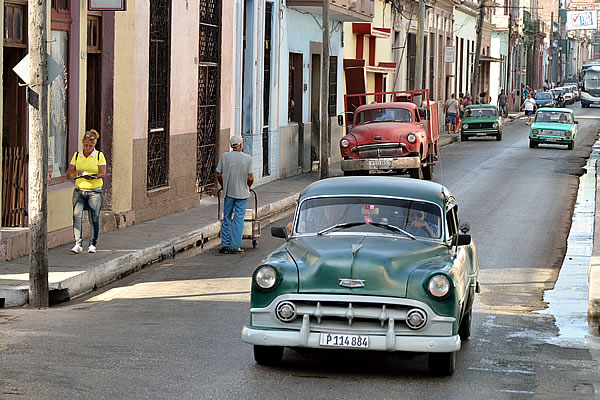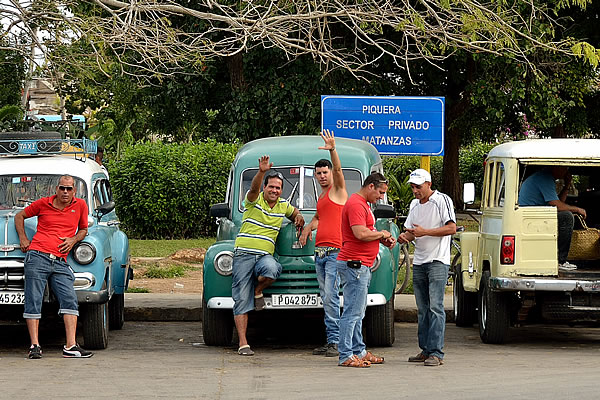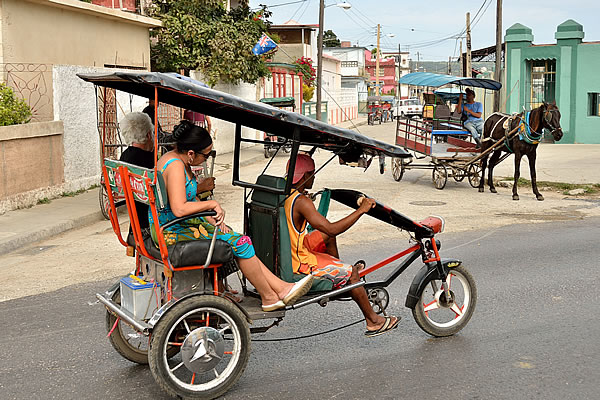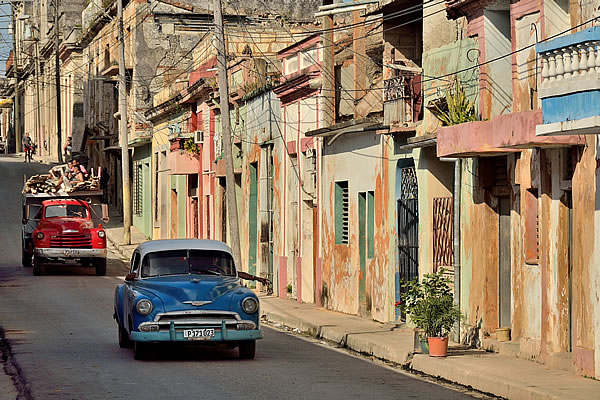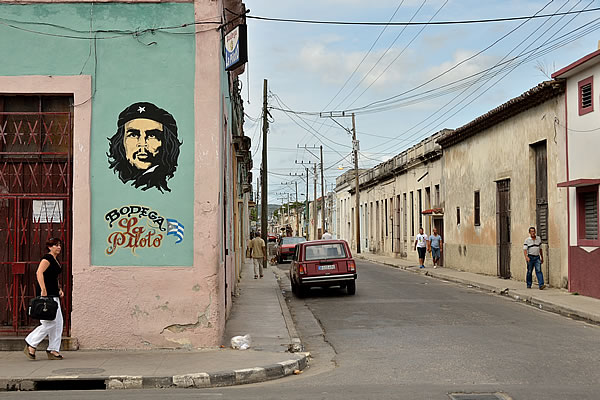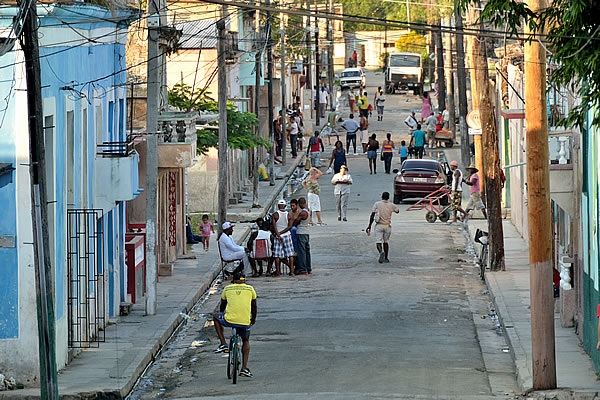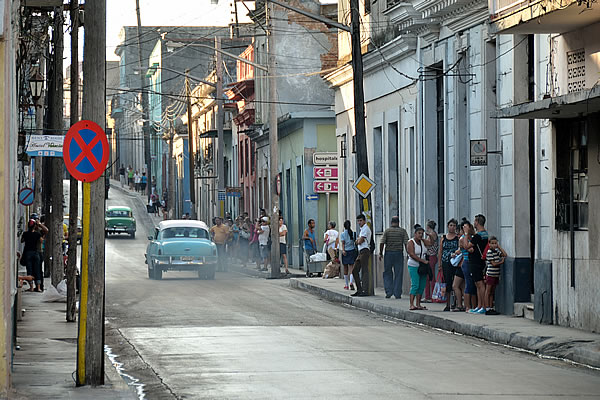|
| Matanzas, the perfect introduction to Cuba |
Havana (Cuba), January 15th 2015
|
|
|
|
We land on the airport of Varadero after a flight of almost ten hours with one of the planes of the German airline Air Berlin. Varadero is one of the most popular beach destinations of Cuba, and for that reason most people on this flight are Germans who booked an all-inclusive holiday in one of the many resorts that face the perfect white sand beaches of Varadero. Most of them won’t see a lot of Cuba because they will stay their entire holiday period on the compound of the resort. When we leave the arrival hall of the airport, many buses, mostly chartered by tour operators like Tui, are waiting for the holiday makers to transfer them to the different resorts of Varadero.
However, our destination is Matanzas, a small city, an approximately 30 minutes’ drive away from Varadero Airport. There is no public bus to Matanzas, so we are forced to take an expensive cab. The drivers start with a price of 30 Cuban Convertible Pesos (CUC), but we manage to agree a price of 20 CUC, which is still 18 Euros and approximately half of the monthly salary of a Cuban doctor in this socialist country! But we realize that we have to get used to these kind of prices in this country. The Cuban government welcomes foreign tourists and want to get the most out of them. The tool they use is the Cuban Convertible Peso (CUC), a currency which is specifically introduced for foreigners to engineer a double pricing system. The CUC is one-to-one connected to the US-Dollar. Besides the CUC, there is the CUP, or the ‘normal’ Cuban Peso who is there for the Cuban people. The CUP is often also called the Moneda National. However, in reality the two currencies are used both by Cubans and foreigners because also the exchange rate between the CUC and CUP is fixed (1 CUC = 25 CUP). Shops, taxis, restaurants and hotels that focus on tourists are always priced in CUC and these prices are often higher than in the west. If you wander out of the tourist areas, you will find many Moneda National shops and restaurants where you can pay in CUP. There shops and restaurants are often much cheaper than the CUC shops and restaurants because they focus on Cuban people.
|
|
Old American cars are still common in Cuba |
| |
When we enter Matanzas by taxi, we immediately realise that we are in Cuba. The narrow, often one direction streets, are lined with small colourful houses with small shady patios where people sit to avoid the sun. Many walls have socialist texts on them that constantly remember the people how important the revolution was and what it brought for them. “Honour is better than money” is a popular one. The texts are often complemented by a painting of one of the two most famous heroes of the revolution: Fidel Castro or Che Guevara. The penetrant petrol smell in the narrow streets makes the picture complete. Old American gas guzzlers from the 1940s and 1950s are still prominent in the street and serve as shared taxis for the local people. We look at each other and without saying a word we know from each what we think: this is the reason we came to Cuba.
The taxi drops us at the central park called Parque Libertad (Freedom Park), from where it is only a short walk to our Casa Particular. A Casa Particular is a private home where one or more rooms are available for foreign travellers. This is a perfect alternative for the more expensive government-run hotels where the service is often poor. The increased number of travellers and the wish of the Cuban government to let local people profit more from the hard currencies that are brought in by the foreign tourists, they allowed families to rent out rooms to travellers. This is a great development, not only for Cubans families who have a room to rent, but also for travellers who like to spend their money directly at the families. Besides that, the experience of living with a Cuban family for a couple of days is unique. Rooms at a Casa Particular are also cheaper than hotel rooms and the family is often very happy also to cook food for you. And believe us, the food is better, more diverse and the portions are huge.
|
|
'Collectivo' taxi drivers waiting for customers on the bus station of Matanzas |
| |
We stay two full days in Matanzas and have a great time. The city does not belong to the most important tourist destinations of Cuba and that means that you won’t see a lot of foreign travellers in the city. And that is also the main charm of this typical Cuban city. The tourist industry is still on a very low level and that means that there aren’t any annoying touts on the streets who want to earn money from you. And that is a big difference from the more touristy destinations in Cuba like Havana, Trinidad or Cienfuegos. Also the prices in the shops aren’t inflated due to the tourists. In Matanzas it is still possible to buy a 5 litre mineral water canister for less than 2 US-Dollars, while it is very difficult to buy a 1.5 litre bottle for the same price in for example Trinidad.
We experienced Matanzas as one of the most funny and interesting destinations in Cuba. And when we write this, we already visited places like Havana, Vinales and Trinidad. The churches, parks and buildings in Matanzas aren’t definitely not the most beautiful in the country, but the city does have something that is hard to find in the more touristy cities: pure Cuban charm. That does not mean that we say that you have to skip all the more popular tourist destinations in Cuba. All we want to say is that if you visit a city that is not on the beaten tourist trail (like Matanzas), you probably experience also a different Cuba; a Cuba that is not yet focussed on tourists. And that is why we liked Matanzas so much. It was for us the prefect introduction to Cuba.
|
|
The bicycle taxi or horse cart are good for short distances |
|
A typical Matanzas street |
|
Che Guevara, one of Cuba's revolutionairy heroes, is still everywhere |
|
Cubans love to socialise on the street |
|
Bad air quality in Matazas because of the many old vehicles |
| |
|
|
